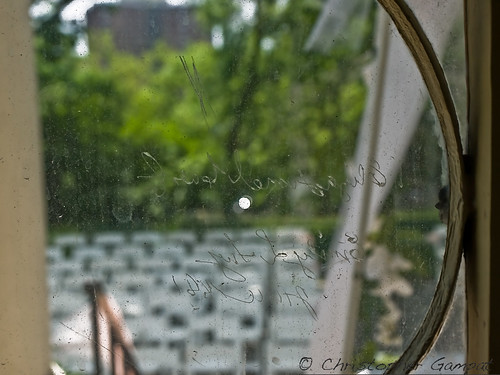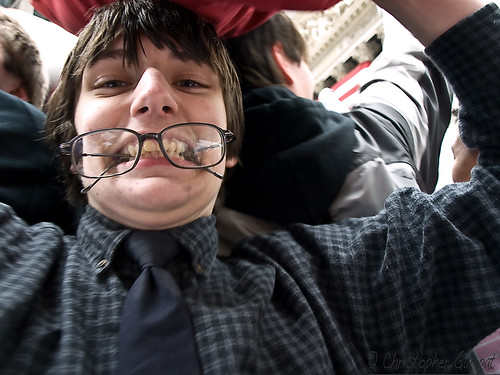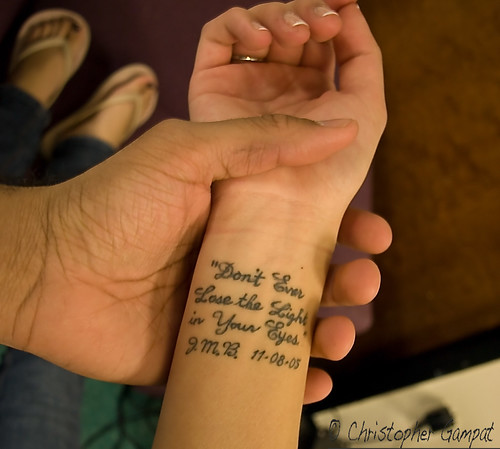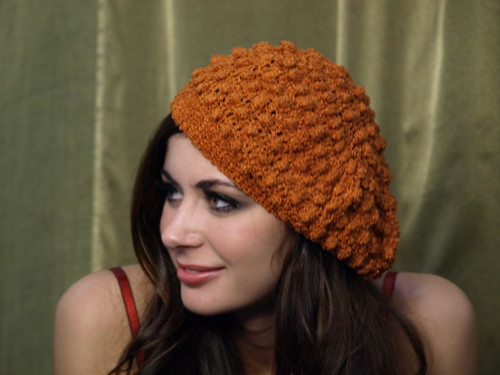Recently, I’ve been shooting all my shots without autofocusing and only relying on the manual focus wheel on my Olympus E-510. What I’ve discovered is that it’s making me think more about my shots, framing, and forcing me to concentrate more on achieving the perfect photo that I have set in my mind already.
In contrast, the world of commercial and event shooting has called for the “spray and pray” method of shooting. On top of this, your camera’s autofocusing may not always be up to par with your expectations and standards; especially in low light as is the case with the above photo. It was achieved with manual focus.
First off, we need to keep in mind that after working with our cameras for a while, we become familiar with and know exactly where the buttons and control dials are that we need to use in order to manipulate the camera to do what we want. However, how many photographers can say the same things about their lenses? Can you twist the focus wheel on your lens and know exactly at what depth it will focus without looking through the viewfinder but instead just by feeling it?
As an Olympus shooter, I’ve got an E-510 with a 14-42mm F3.5-5.6, a 40-150mm F 4-5.6 and sometimes I handhold an old Canon FD F1.4 lens in front of the sensor (yes I know that can be not smart at times but the shots I get are worth it.) After shooting only with autofocus for a while I came the realize that it isn’t always reliable enough to get the shots that I want and sometimes can even be frustrating. This is the case even with selecting the exact autofocus point. Therefore, focusing manually has become habitual.
This goes all across the board: I’ve shot with Olympus, Canon, Nikon, Panasonic and Sony. Nikon autofocusing is perhaps the best with autofocus but there are other reasons as to why focusing manually has its benefits that I’ll get to.
Take for example the photo above: the focus is on the writing on the window which was carved into it by one of the house’s previous owners. How many systems do you really think would have been able to capture something like that while autofocusing? Many systems would probably “think” that the photographer would want to take a picture of the beautiful garden outside. However, that may not be what the photographer may want.
Let’s go back to this shot for a moment: while manually focusing one thinks about their composition of their shot much more. The focus is on the closest chair and a visual rhythm and beauty is created with the light in the background and showing the row of them parallel with the other lines in the image. This is how I actually see without glasses on.
The picture above was taken out in Center Island in Canada during a huge downpour of rain. When seeing this, I was awestruck at the beauty. The shot was taken in manual focus mode and set to infinity focus because autofocus wasn’t working through all the mist and haze. This is why the leaves on top of the frame are blurry and why the ducks, trees on the right hand side and Toronto are clear.
Zooming in and out, I was able to set the exact point on where I wanted to focus and also took the time to wait for the exact moment when the swaying trees in the top of the frame weren’t blocking the perfect view of the city. Manually focusing helped me keep my cool in the harsh weather by forcing me to focus on the shot. This is true even further in an instance where I had to ditch my glasses.
I’m part of the Blind Photographer’s group on Flickr, and if you’re visually impaired then not only do you see the world differently than most people but you also usually require your glasses while shooting. In the above photo, I experienced one of the hardest stories I’d ever shot. Every year there is a giant pillow fight in New York City where people gather to, well, smack each other with pillows. I’m one of the psychopath photographers that jump head-on into the chaos in order to get shots, expressions and the best moments from inside. People with glasses are usually told to take them off as you get smacked in the face often. To shoot this story, I had to get a feel for where my lenses would manually focus just by twisting the wheel because I had to ditch my glasses. Capturing the expression on this guy’s face before he brought a fluffy pillow down on my head and camera was priceless because I literally swung the camera in his direction, twisted the focus wheel and snapped the photo. Autofocusing would have worked to a certain point: but it could also risk losing many critical moments that could not be repeated. Additionally, I don’t know where the autofocus points will go for but I do know what the focus wheel will go for.
Lastly, there is also portraiture. Shooting products and people in a studio has taught me that focusing manually will give your image the focus point that you will exactly need to satisfy your clients. Autofocusing can be a hassle and slow down your productivity time vs composing the shot and focusing manually yourself so as to cut out unnecessary cropping and post-production work.
As I’ve learned when shooting actresses in short films while in college, it’s best to zoom in the tightest you can, focus on the exact point that you want the shot to be, zoom all the way out and then recompose your shot. This way all the detail that you could possibly want to make your shot work will be available to you.
Give it a try for a while, see how you grow and change as a photographer.









Great post Chris! that’s really something we photographers need to consider…
although i totally agree with you, but lots of time i see manual focusing -specially in action (such as the pillow fight…etc)- is time consuming and you may miss the shot, since the auto-focus will focus on your target faster (assuming you’ve selected the centre point of focus). I can’t imagine doing manual focus all the way is faster to have a sharp focus on your subject from the viewfinder, isn’t taking more time to make sure your subject is in focus?
regards,
When I was photographing weddings, I used to prefocus manually on a certain
pew as the bride and bridesmaids came down the aisle. This allowed me to capture a nice smile at the focus point because the camera reacts much faster with prefocus. This also works with moving objects in sports photography.